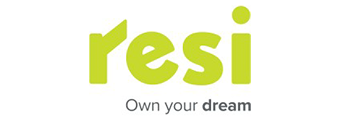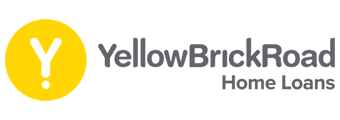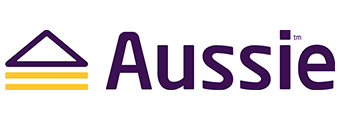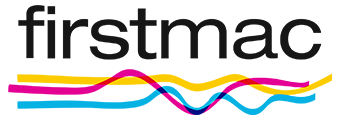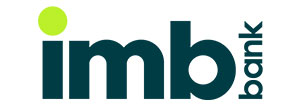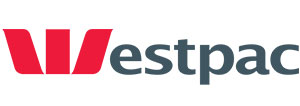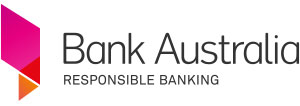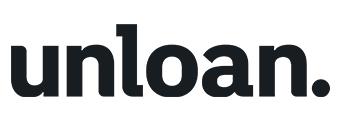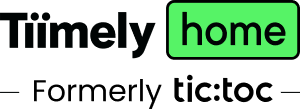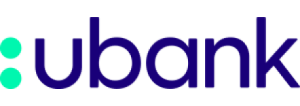| Lender | Home Loan | Interest Rate | Comparison Rate* | Monthly Repayment | Repayment type | Rate Type | Offset | Redraw | Ongoing Fees | Upfront Fees | Max LVR | Lump Sum Repayment | Additional Repayments | Split Loan Option | Tags | Row Tags | Features | Link | Compare | Promoted Product | Disclosure |
|---|---|---|---|---|---|---|---|---|---|---|---|---|---|---|---|---|---|---|---|---|---|
6.73% p.a. | 6.80% p.a. | $2,804 | Interest-only | Variable | $0 | $0 | 80% | ||||||||||||||
7.09% p.a. | 7.12% p.a. | $3,357 | Principal & Interest | Variable | $0 | $396 | 80% | ||||||||||||||
7.34% p.a. | 7.37% p.a. | $3,058 | Interest-only | Variable | $0 | $396 | 80% | ||||||||||||||
7.14% p.a. | 7.41% p.a. | $3,374 | Principal & Interest | Variable | $295 | $0 | 85% | ||||||||||||||
6.74% p.a. | 6.92% p.a. | $3,240 | Principal & Interest | Variable | $10 | $1,325 | 80% | ||||||||||||||
6.99% p.a. | 7.26% p.a. | $3,323 | Principal & Interest | Variable | $0 | $0 | 80% | ||||||||||||||
7.69% p.a. | 7.95% p.a. | $3,204 | Interest-only | Variable | $15 | $1,559 | 80% |
What is a low doc home loan?
Shopping around for a home loan can be a daunting experience, especially for those who don't fit the traditional mould when it comes to their employment situation.
This is where low doc home loans can come in handy, providing a path to property ownership for people who might find traditional mortgage requirements out of reach.
Low doc - short for low documentation - home loans are designed for people who might struggle to provide two years of tax returns or the financial records required for a traditional home loan.
These products can be particularly appealing to self-employed individuals, freelancers, and small business owners. Especially those who mightn't have a regular income stream or up-to-date financial statements
What's the difference between low doc home loans and regular home loans?
Low doc home loans cater to a different type of borrower than traditional home loans. The primary distinction between the two lies in the documentation that needs to be provided for loan approval.
As the name suggests, low doc home loans require less documentation than typical mortgages.
Traditional home loans are often designed for employees with a steady income. In contrast, low doc loans are tailored for self-employed individuals or those who rely on irregular income streams.
While borrowers might traditionally need to provide pay slips, employment history, tax returns, or financial statements to prove their income, those applying for a low doc home loan may offer alternative evidence of cash flow. Such might include Business Activity Statements, bank statements, or an accountant's letter.
However, this flexibility can come at a cost. Low doc home loans typically demand higher interest rates and fees due to the perceived increased risk they present to a lender.
Additionally, low doc home loans often require a lower loan-to-value ratio (LVR), meaning a borrower might need a larger deposit.
Who are low doc home loans for?
Low doc loans are often best suited to borrowers who are self-employed, own a business, work as a sole trader, contract worker, or freelancer.
If you fit into any of these categories, or have another income arrangement that's difficult to document, you might find that your income can fluctuate, making it challenging to provide traditional proof of income to a lender.
Am I eligible for a low doc home loan?
Eligibility requirements for low doc home loans may differ between lenders, but you'll typically need to have a registered Australian Business Number (ABN) and be self-employed, running a small business, contracting, or freelancing.
Applicants also usually need to have been in business for at least two years.
What documents are required for a low doc home loan?
The specific documents required to secure a low doc home loan can vary, and borrowers might be able to mix-and-match those they provide to give lenders a clear picture of their finances.
Ultimately, a lender will simply want to know you receive the income you say you do from the sources you say you get it from. Documents that can help to evidence this include:
- Registered business name and ABN
Providing an ABN and a registered business name can help prove you're legitimately self-employed. - Business Activity Statements (BAS)
Usually, providing 12 months' of statements can help evidence your income. - Business financial statements
Your business' financial statements can give a lender a broader view of its financial health. - Accountant's letter
An official statement from a certified accountant can also help to verify your income. - Self-certified income declaration
You might also want to provide a declaration from yourself confirming your income. - Proof of identity
Just because you're applying for a low doc home loan doesn't mean you don't need to prove you are who you say you are. Your lender might ask for ID documents such as your drivers license or passport. - Credit history report
A credit history report can help a lender assess your creditworthiness and previous financial behavior. - Property details
A lender will also want specific information on the property being purchased, as it will likely be used as security against the home loan.
What are the pros and cons of low doc home loans?
| Pros | Cons |
|---|---|
| Provides flexible financing solutions tailored for self-employed individuals or those with non-traditional income streams | Limited choices of lenders, as not all lenders offer low doc loans |
| Offers many standard home loan features, such as offset accounts and the ability to make additional repayments | Typically come with higher interest rates compared to standard home loans |
| Allows borrowers to choose between principal and interest or interest-only repayment options | Often require a lower LVR, meaning a larger deposit might be needed |
| Typically requires less documentation compared to traditional home loans | May involve higher fees, which could add to the overall cost of the loan |
| Accepts alternative methods for verifying income, making it easier for non-traditional earners to qualify |
Risks associated with taking out a low doc home loan
A low doc home loan can offer a helpful solution for self-employed borrowers or those who can’t provide traditional income documentation. However, it's important to understand the potential risks. While these loans offer more flexibility in terms of paperwork, they often come at a higher cost and have stricter terms, which can impact your financial stability.
Here's a look at the key risks associated with low doc home loans:
- Higher Interest Rates: Lenders may charge higher rates due to the perceived risk a low documentation borrower poses.
- Larger Deposits Required: You may need to provide a deposit of 20% to 40% of the property’s value in order to get a low doc home loan.
- Lender's Mortgage Insurance (LMI): If your deposit is less than 20%, you may need to cover the cost of LMI.
- Stricter Terms: Low doc home loans often come with tighter conditions, limiting flexibility in repayments or refinancing options.
- Potential Financial Stress: Without solid proof of income, you may underestimate your ability to repay your home loan, which could lead to financial difficulties.
Common features of a low doc home loan
Low doc home loans provide flexibility for borrowers who may not have standard income documentation, but in many respects, they resemble traditional loans. This similarity extends to the range of features available. Here are some key features you might find with a low doc home loan:
- Extra Repayments: Borrowers may be able to pay off the loan faster and reduce their interest payable without penalty.
- Redraw Facility: Allows borrowers access to any extra repayments made, offering a financial safety net.
- Offset Account: Reduces interest by offsetting the loan's principal balance with funds held in a linked account.
These features can add flexibility, helping borrowers manage their loan more efficiently – which can be particularly beneficial for those with irregular income.
Which lenders offer low doc home loans?
Several lenders offer low doc home loans in Australia, including:
- Liberty Financial
This lender offers low doc home loans with flexible income verification and LVRs as high as 85%. - Pepper Money
Pepper's Alt Doc Loan option is for self-employed or small business owner borrowers, including those who have impaired credit. - Yard
Yard typically lends to self-employed borrowers who have two years of trading history under the same ABN. Though, they may offer mortgages to those who have traded under an ABN for at least 6 months. - Resimac
Resimac is a non-bank lender that offers an Alt Doc product catered to self-employed applicants.
Each lender has unique criteria and terms for their low doc home loan products.
It's advised to compare your options carefully and consult directly with lenders or a financial advisor to find the most suitable option for your needs.
Frequently Asked Questions
Find answers to the most frequently asked questions about Low Doc Home Loans.
Yes, you can switch from a low doc home loan to a regular (full doc) home loan if you later have the standard documentation required for a regular loan.
This transition typically involves refinancing to a new home loan product or lender.
If you’re self-employed, your borrowing capacity may be lower than it would be if you were employed in the traditional sense. Though, how much a particularly lender will lend to you will likely depend on its individual policies and procedures.
If you’re self-employed, a lender might not let you borrow without a sizable deposit, or might ask that you pay for Lenders Mortgage Insurance (LMI).
Additionally, a self-employed borrower with a proven track record of long-term, stable income may be able to borrow more than someone who has been self-employed for a shorter period or has a less consistent income history.
Without some form of employment, whether it be self-employment, casual employment, or freelance work, it will likely be difficult to secure a home loan, as you'll struggle to meet serviceability testing and, if you did get a mortgage, you mightn’t be able to meet the repayments.
Your income is normally the main factor that a lender will consider when it determines whether or not to give you a loan.
Unless you're flush with disposable cash, buying a house with no income is near impossible.
However, you can typically buy a home with a low income, as long as you’re able to prove you can repay the loan and you have a good credit history.
When getting a low doc home loan, lenders will simply want to know the sources of your income. Documents that can help to prove this are: Registered business name and ABN, Business Activity Statements (BAS), Business financial statements, Self-certified income declaration, Accountant's letter, Proof of identity, Credit history report, and Property details.
Low doc home loan interest rates are typically higher than those of regular home loans, as lenders consider low doc borrowers to be higher risk. However, with a deposit of 40% or more, you might be able to obtain interest rates similar to standard home loans.

Get help finding
the right home loan
Not sure which type of loan is best for your needs?
Your Mortgage can help you find out.

